If you work in customer care, you’ve been talking about chatbots for about a decade. Your organization may have been using a chatbot for almost that long. You’ve heard or participated in all the chatbot debates, and likely heard the following:
- “Chatbots ruin the customer experience”
- “Chatbots save the contact center big money”
- “Chatbots are an obstacle to interacting with a human agent”
- “Customers prefer interacting with chatbots”
One thing that’s not up for debate: Chatbots are here to stay. According to the Salesforce “State of Service 2021” report, decision makers between 2018 and 2020 reported an 87% increase in their teams’ use of chatbots.
I expect this increase to continue. Chatbots work better than they used to, customers have grown accustomed to them, and most people would do anything to avoid the 1-800 phone number and the IVR.
However, it is also clear that chatbots need better small talk. Whether they’re successfully replacing a human agent or interacting with the customer before the human agent takes over, chatbots must be configured to greet the customer with natural-sounding phrases that start the self-service interaction right. Too many organizations accept the chatbot’s preset greeting text or start the conversation by presenting questions they’d like the customer to ask.
Customer service small talk (greeting words, opening questions, invitations to interact, etc.) isn’t small at all. The conversation starters we humans use when we interact with customers influence how well we resolve their issues and how satisfied they are with our service. The same holds true for chatbots. When they’re bad at small talk, they harm important customer service outcomes.
Learn from the chatbot small talk mistakes these companies made, so you won’t make them with your chatbot.
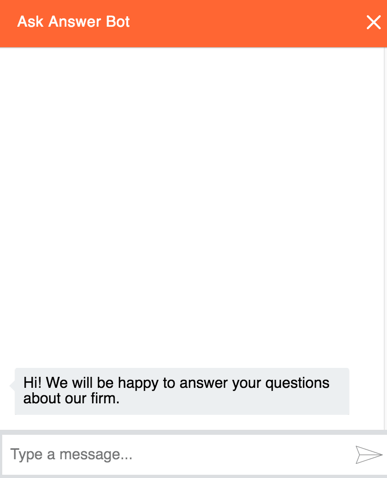
- Be real. When your chatbot invites interaction, use real questions and the customer’s own words. This Ask Answer Bot kicks off the conversation with a question no one ever asks! Customers don’t come to your website to “ask questions about your firm.” even when your company in a law firm! They ask questions about your services, but not about your firm.
Your chatbot should start the conversation in a more natural fashion. It would greet the customer and offer a likely question to be answered: “Hi. How can I help you find the plumbing supplies you need?” Or it could greet the customer and propose a couple of options: “Hello. Would you like to reserve a campsite or change and existing reservations?” But zero customers want the chatbot’s help with answers to questions about your “firm.”
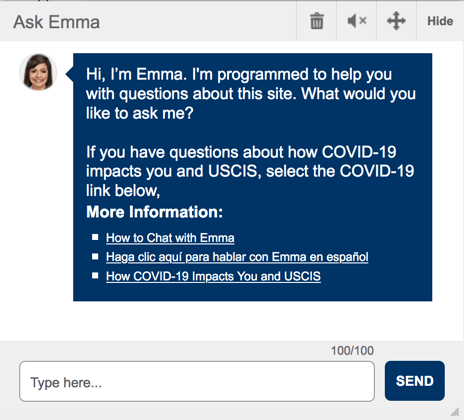
2. Invite customers to ask about your products and services, not your site. Emma, the chatbot of the U.S. Citizenship and Immigration Services, starts out by saying, “I’m programmed to help you with questions about this site. “While the choice of the word “programmed” is reasonable, it’s just weird to offer help with questions about the uscis.gov site. Most USCIS customers have gob, life-changing questions like, “How do I become a U.S. citizen?” or “How do I apply for a Green Card?” It’ll be the rare customer indeed who wants Emma to answer questions about the site.
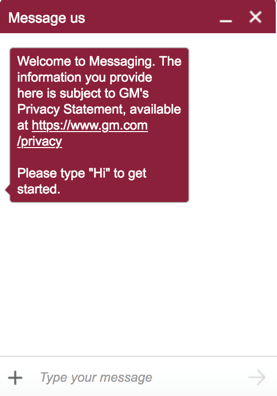
3. Configure the bot to identify itself or mention the company, product, or service. “Welcome to Messaging” is no way to begin a chatbot conversation with a customer. We don’t start our emails to customers “Welcome to Emailing,” do we? Customers don’t want to be welcomed to a self-service channel by having that channel refer to itself.
Also, this bot’s small talk doesn’t include mention of the company’s name or products. Can you guess which company the bot is inviting you to chat with? It’s Cadillac. Sure, you’d have to be a Cadillac.com to interact with the bot, but a better greeting would include the word “Cadillac.”

4. Write brief, concise copy. Give clear instructions. Elektro, the power company chatbot, confronts customers with 82 words of blah blah blah before the “Type a message field.” And the advice about signing in is confusing. It will leave many customers asking “What do you want me to do?”
Here’s the cut-down-to-size 54-word version (which, admittedly, still includes the confusing advice about signing in):
Hello! I’m Elektro, Pepco’s virtual assistant. (Your use of Elektro is subject to our terms and conditions.) Please sign in, so we can both see your account info. Once you’ve signed in, start another chat, and I’ll help you from there. You can also continue without signing in.
- Sign in
- Continue without signing in
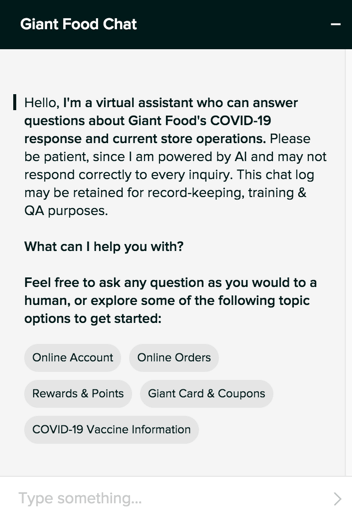
5. Tell customers they’re chatting with a bot, but don’t undercut the answers it give. A customer using Giant Foods’s chatbot would certainly be confused about information quality when they read “..I am powered by AI and may not respond correctly…” followed by “Feel free to ask any questions as you would to a human…”
Which is it? Are the bot’s answers as accurate as a human’s or not? Is the bot encouraging customers to form questions using natural, everday syntax but warning them that the answer could be wrong? And why should customers agree to be patient? It’s not their job to nurture the bot until it’s useful.
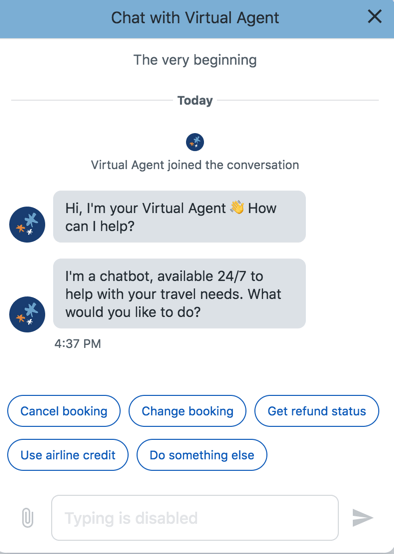
6. Launch the conversation smoothly, without hiccups or stutters. Travelocity’s chatbot pops out two messages simultaneously, which is unnecessary, and it uses two different terms – Virtual Agent and chatbot – to refer to itself, which could be confusing. This small talk could leave customers wondering. “Did I miss something?”
There’s no excuse for bad bot small talk. After all, you have more control over what your chatbot says than you do over what your human agents say. Don’t let your chatbot harm customer experience by sounding false or ignorant. Don’t let it cause the customer extra effort. Develop your chatbot so it has the social graces required to start a conversation.







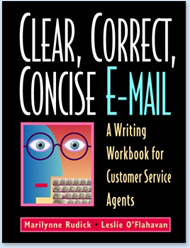
0 Comments